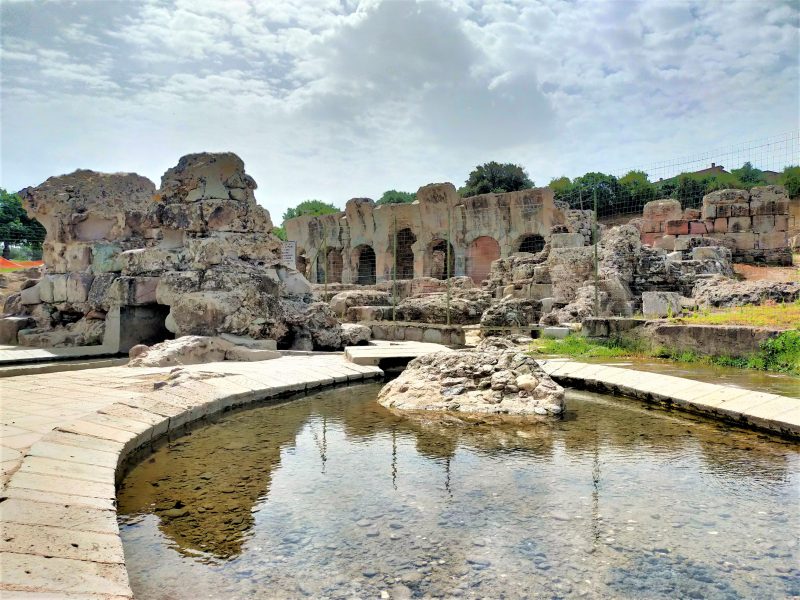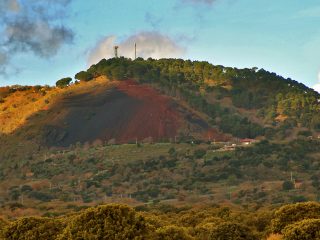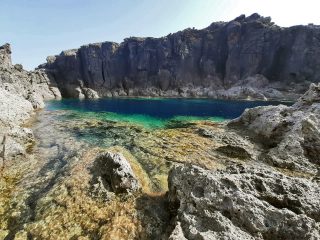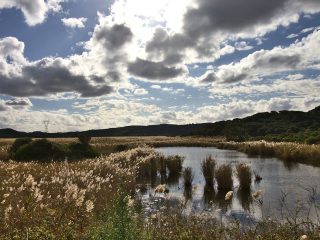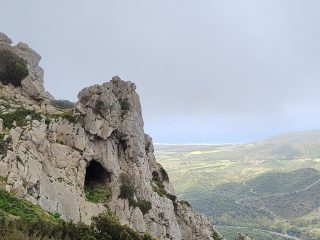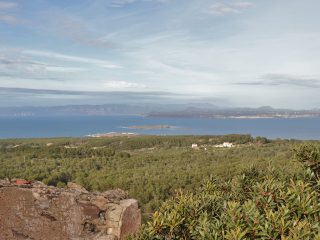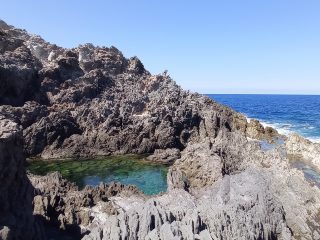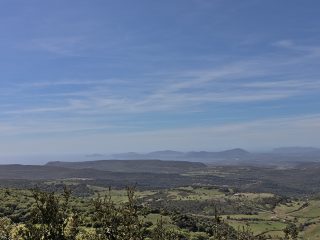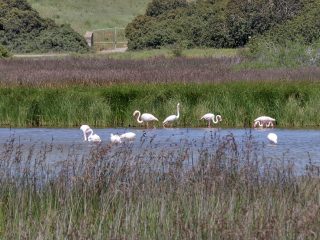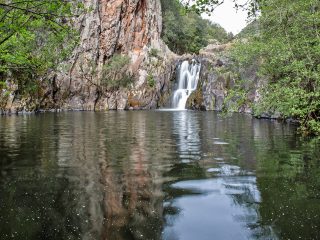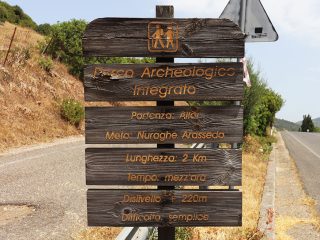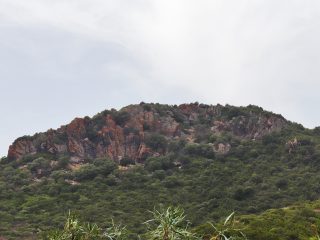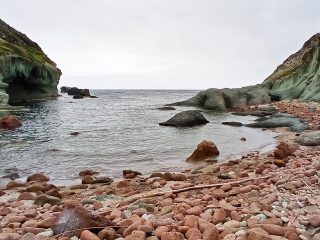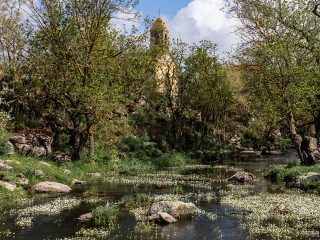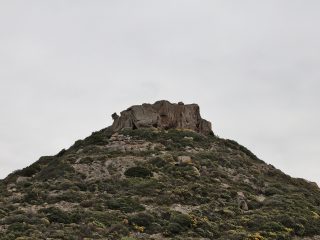The monumental Fordongianus thermal baths (Aquae Ypsitanae Roman baths) are one of the most magnificent examples of the Roman era in Sardinia.
The baths were built by the Romans between the I and III centuries A.D. and have two working plants, thanks to the presence of two springs which provide hot and cold water.
The fine hot-water spring, with its therapeutic properties and a temperature of almost 56°C, was used in the original complex (1st century A.D.), after being mixed with the cold water.
The building was constructed using vast blocks of green trachyte and, to this day, still houses a pool and a seven-light colonnade covered with barrel vaults. Other preserved areas worth mentioning include the chamber on the eastern side of the natatio, referred to as the Ninfeo. This area was where the goddesses of water and springs were worshipped. About a dozen votive altars are positioned in special niches. One of these was discovered in perfect condition and is proof that this building was frequented by Governors and the elite of that time.
The system built upstream between the II and III centuries A.D. was a typical ring-shaped itinerary for ablutions-treatment purposes. A frigidarium, two tepidariums, two calidariums and the corresponding furnaces can also be spotted. An open-air piazza extends out just behind these and is overlooked by additional buildings. The Castellum Aquae, or rather the cold-water basin, some tabernae with frescoed walls and a communicating staircase leading to the city of Forum Traiani above, an important military and trading settlement.


